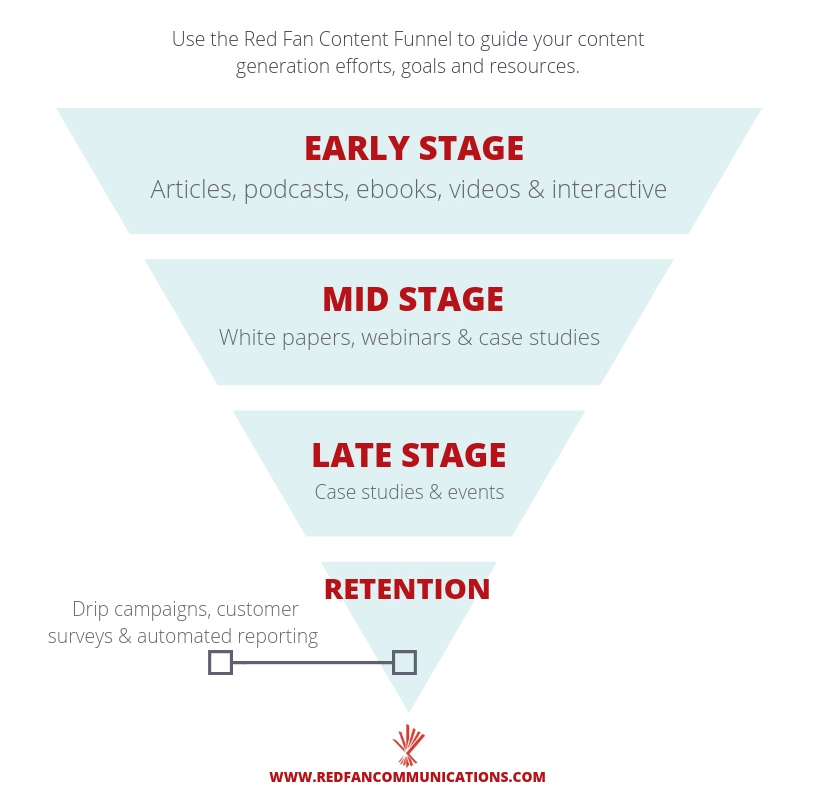The ultimate goal of any PR or marketing department is, of course, to drive sales and move prospects to the next layer of the sales funnel. The same is true of content marketing, but the route by which it accomplishes its goal can be vastly different than (or even replace) your typical sales conversation.
That’s because content marketing in its purest form is a trust-building exercise with your customers that addresses existing or potential problems with solutions that don’t focus on your products. The best content strategies rarely mention brands or products at all.
Moving a prospect from one stage to another is contingent on your content’s ability to understand a challenge, solve it and deliver value without immediately expecting something in return. That’s how you get something in return.
The standard buyer’s journey follows some variation of movement from awareness to consideration to decision to retention and loyalty. Your content strategy should reflect this journey, with stories that grow in complexity and depth as the prospect’s interest level grows. This requires a deep understanding of audience motivations, purchasing behavior and challenges.
Many brands also find their sales cycles stalling in today’s internet-enabled customer journey. With an endless amount of information at their fingertips, people are more and more likely to progress deeper into the buyer’s journey before they ever interact with your brand or an employee. Research from Forrester indicates that customers can move through up to 90 percent of the buyer’s journey before they speak with a sales rep or employee at your company.
A content strategy can fill that 90 percent, giving your brand an avenue to engage with prospects much in the same way a sales team does. The right piece of content—whether it’s an article, a white paper, a webinar, video case study or something else entirely—can educate and drive awareness, generate demand, facilitate a conversation with a sales rep, drive traffic to your website or even convert a lead directly.



